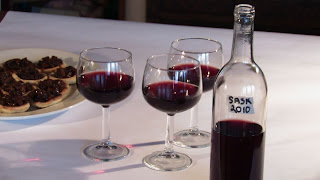 |
| The garden now |
I mailed away my 2011 seed order a few days ago. It''s a slightly smaller order than usual, because I'm not ordering any flower seeds this year. I'm going to concentrate on changing my garden layout in hope of reducing my workload.
For as long as I can remember, I've been interested in things like permaculture and natural gardens. I try to focus on plants that grow easily in our climate rather than struggling with the ones that need babying. My garden has never experienced a power tool, there are lots of flowers mixed in with the veggies, and I encourage volunteers. It's slightly chaotic and quite unlike the gardens of my neighbours. I believe theirs are all more productive than mine, but I manage to grow nearly all the produce we eat and I'm enjoying myself while I do it, in a garden that suits my personality.
The biggest difficulty I have is the lack of running water. I haul water from our pond in buckets to use for watering seeds if we have a dry spell, but after the seedlings are growing well, they have to make do with whatever water falls from the sky. Mulching heavily between plants helps keep them moist. I've also placed the garden where it's "sub-irrigated" by the natural water flow heading for the creek below our property.
I grow a wide variety of greens, some herbs, root crops, asparagus, and berries. A small, unheated greenhouse shelters some cherry tomatoes to snack on, as well as a few tobacco plants. My neighbours grow tons of beautiful potatoes, so I trade a lamb for my winter supply of these. Add the meat, cheese, milk, and eggs that my animals produce, and some wild foods that I gather, and you have our basic diet.
In a pinch, we could live quite nicely on what we produce here on our land. We don't, of course. We buy grains and luxeries like coffee and spices. Also, we usually travel a couple of hours south in the fall to pick our yearly supply of tomatoes, squash, and peppers.
Anyway, I've ordered the seeds I need. Now there's nothing to do but dream and plan for a while, till the first seeds can be started in the house in early March.
 |
| Early spring garden |
 |
| First spring flowers |





























